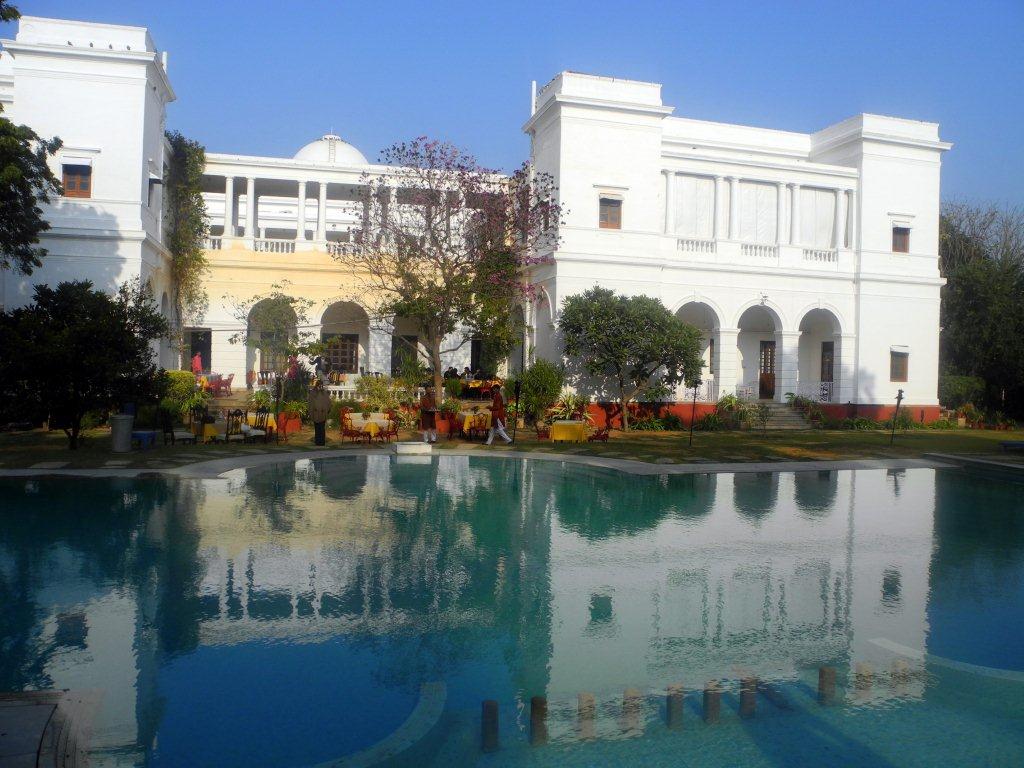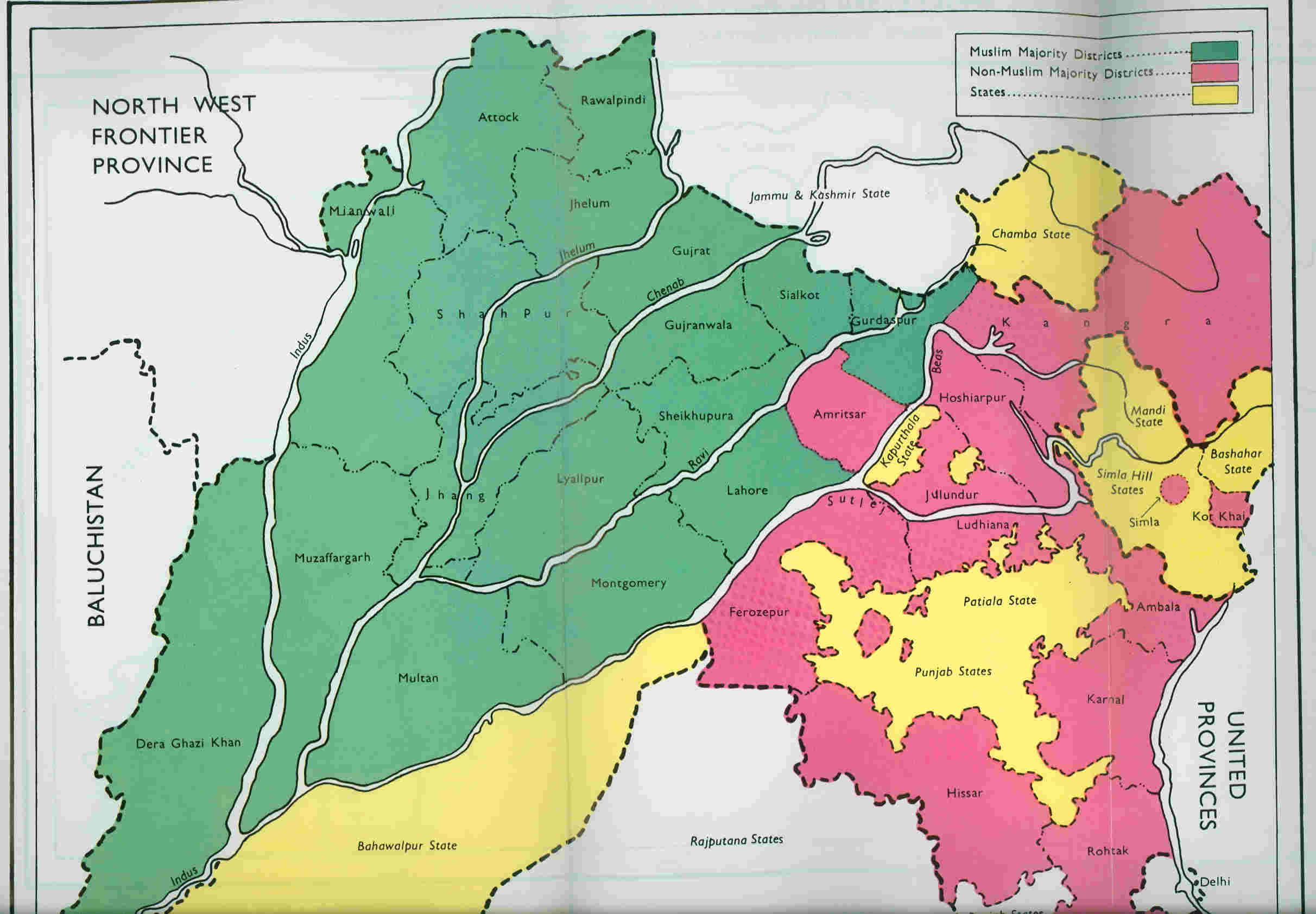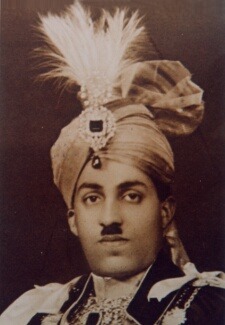|
Pataudi State
Pataudi State was a small princely state in India, established in 1804 by the East India Company rule in India. The state formed a part of the Delhi Territory in the Ceded and Conquered Provinces. It was under the suzerainty of the Commissioner of Delhi. It had an area of 52 square miles and included one town, Pataudi, and 40 villages, ruled by the Pataudi family. History The state of Pataudi was established in 1804 by the British East India Company, when Faiz Talab Khan, an Afghan Pashtun warlord of the Barech tribe, who was made the first Nawab, aided them in their battle against the Maratha Empire, during the Second Anglo-Maratha War. The family traces their origin to 16th century India, when their ancestors came from present day Afghanistan to India during the period of the Lodi dynasty. The 8th Nawab, Iftikhar Ali Khan Pataudi, played cricket for both England and India and captained the latter. His son the last Nawab also captained the Indian cricket team. At the end ... [...More Info...] [...Related Items...] OR: [Wikipedia] [Google] [Baidu] |
British India
The provinces of India, earlier presidencies of British India and still earlier, presidency towns, were the administrative divisions of British governance in South Asia. Collectively, they have been called British India. In one form or another, they existed between 1612 and 1947, conventionally divided into three historical periods: *Between 1612 and 1757, the East India Company set up "factories" (trading posts) in several locations, mostly in coastal India, with the consent of the Mughal emperors, Maratha Empire or local rulers. Its rivals were the merchant trading companies of Portugal, Denmark, the Netherlands, and France. By the mid-18th century three ''Presidency towns'': Madras, Bombay and Calcutta, had grown in size. *During the period of Company rule in India, 1757–1858, the Company gradually acquired sovereignty over large parts of India, now called "Presidencies". However, it also increasingly came under British government oversight, in effect sharing sovereig ... [...More Info...] [...Related Items...] OR: [Wikipedia] [Google] [Baidu] |
Lodi Dynasty
The Lodi dynasty was an Afghan royal family that ruled Sultanate of Delhi from 1451 to 1526. It was the fifth and final dynasty of the Delhi Sultanate, and was founded by Bahlul Lodi when he replaced the Sayyid dynasty. Bahlul Lodi Following the reign of the Sayyids, the Afghan or Turco-Afghan Lodi dynasty gained the sultanate. Bahlul Khan Lodi () was the nephew and son-in-law of Malik Sultan Shah Lodi, the governor of Sirhind in (Punjab), India and succeeded him as the governor of Sirhind during the reign of Sayyid dynasty ruler Muhammad Shah. Muhammad Shah raised him to the status of a Tarun-Bin-Sultan. He was the most powerful of the Punjab chiefs and a vigorous leader, holding together a loose confederacy of Afghan and Turkish chiefs with his strong personality. He reduced the turbulent chiefs of the provinces to submission and infused some vigour into the government. After the last Sayyid ruler of Delhi, Alauddin Alam Shah voluntarily abdicated in favour of him, Ba ... [...More Info...] [...Related Items...] OR: [Wikipedia] [Google] [Baidu] |
Religion In India
Religion in India is characterised by a diversity of religious beliefs and practices. Throughout India's history, religion has been an important part of the country's culture and the Indian subcontinent is the birthplace of four of the Major religious groups, world's major religions, namely, Buddhism, Hinduism, Jainism, and Sikhism, which are collectively known as native Indian religions or Indian religions, Dharmic religions and represent approx. 83% of the total population of India. India has the largest number of followers of Hinduism, Sikhism, Zoroastrianism, Jainism, and the Baháʼí Faith in India, Bahá'í Faith in the world. It further hosts the third most followers of Islam, behind Indonesia and Pakistan, and the ninth largest population of Buddhists. The Preamble to the Constitution of India states that India is a secular state, and the Constitution of India has declared the right to freedom of religion to be a Fundamental Rights in India, fundamental right. Acco ... [...More Info...] [...Related Items...] OR: [Wikipedia] [Google] [Baidu] |
British Punjab Province
The Punjab Province, officially the Province of the Punjab, was a Presidencies and provinces of British India, province of British India, with its capital in Lahore and summer capitals in Murree and Simla. At its greatest extent, it stretched from the Khyber Pass to Delhi; and from the Babusar Pass and the borders of Tibet to the borders of Sind Division, Sind. Established in 1849 following #History, Punjab's annexation, the province was Partition of India#Punjab, partitioned in 1947 into West Punjab, West and East Punjab; and incorporated into Pakistan and India, respectively. Most of the Punjab, Punjab region was annexed by the East India Company on Second Anglo-Sikh War, 29 March 1849 following the company's victory at the Battle of Gujrat, battle of Gujrat in northern Punjab, a month prior. The Punjab was the last major region of the Indian subcontinent to fall to British imperialism. Immediately following its annexation, the Punjab was annexed into the Bengal Presidency a ... [...More Info...] [...Related Items...] OR: [Wikipedia] [Google] [Baidu] |
Nawab
Nawab is a royal title indicating a ruler, often of a South Asian state, in many ways comparable to the Western title of Prince. The relationship of a Nawab to the Emperor of India has been compared to that of the Kingdom of Saxony, Kings of Saxony to the German Emperor. In earlier times the title was ratified and bestowed by the reigning Mughal emperor to semi-autonomous Muslim rulers of subdivisions or princely states in the Indian subcontinent loyal to the Mughal Empire, for example the Nawabs of Bengal. "Nawab" usually refers to males and literally means ''Viceroy''; the female equivalent is "Begum" or "''Nawab Begum''". The primary duty of a Nawab was to uphold the sovereignty of the Mughal emperor along with the administration of a certain province. The title of "nawabi" was also awarded as a personal distinction by the paramount power, similar to a British peerage, to persons and families who ruled a princely state for various services to the Government of British Raj ... [...More Info...] [...Related Items...] OR: [Wikipedia] [Google] [Baidu] |
Saif Ali Khan
Saif Ali Khan (; born Sajid Ali Khan Pataudi; 16 August 1970) is an Indian actor and film producer who primarily works in Hindi cinema, Hindi films. The titular head of the Pataudi family since 2011, he is the son of actress Sharmila Tagore and cricketer Mansoor Ali Khan Pataudi. Khan has won List of awards and nominations received by Saif Ali Khan, several awards, including a National Film Awards, National Film Award and seven Filmfare Awards, and received the Padma Shri, the Orders, decorations, and medals of India, fourth highest Indian civilian award in 2010. Khan made his acting debut in ''Parampara (1993 film), Parampara'' (1993), and had success in the multi-starrers ''Yeh Dillagi'' (1994), ''Main Khiladi Tu Anari'' (1994), ''Kachche Dhaage'' (1999) and ''Hum Saath-Saath Hain'' (1999). In the 2000s, he gained praise and won multiple awards for his roles in the romantic comedies ''Dil Chahta Hai'' (2001) and ''Kal Ho Naa Ho'' (2003), and had success as a solo male star ... [...More Info...] [...Related Items...] OR: [Wikipedia] [Google] [Baidu] |
Privy Purse In India
In India, a privy purse was a payment made to the ruling families of erstwhile princely states as part of their agreements to first integrate with India in 1947 after the independence of India, and later to merge their states in 1949, thereby ending their ruling rights. The privy purses continued to be paid to the royal families until the 26th Amendment in 1971, by which all their privileges and allowances from the central government ceased to exist, which was implemented after a two-year legal battle. In some individual cases, privy purses were continued for life for individuals who had held ruling powers before 1947; for instance, HH Maharani Sethu Lakshmi Bayi's allowance was reinstated after a prolonged legal battle, and lasted until she died in 1985. History When the British Crown partitioned British India and granted independence to the new Dominions of India and Pakistan, more than a third of the subcontinent was still covered by princely states, with rulers who ... [...More Info...] [...Related Items...] OR: [Wikipedia] [Google] [Baidu] |
Constitution Of India
The Constitution of India is the supreme law of India, legal document of India, and the longest written national constitution in the world. The document lays down the framework that demarcates fundamental political code, structure, procedures, powers, and duties of government institutions and sets out Fundamental rights in India, fundamental rights, Directive Principles, directive principles, and the duties of citizens. It espouses constitutional autochthony, constitutional supremacy (not Parliamentary sovereignty, parliamentary supremacy found in the United Kingdom, since it was created by a Constituent Assembly of India, constituent assembly rather than Parliament of India, Parliament) and was adopted with a declaration in Preamble to the Constitution of India, its preamble. Although the Indian Constitution does not contain a provision to limit the powers of the parliament to amend the constitution, the Supreme Court in Kesavananda Bharati v. State of Kerala held that there ... [...More Info...] [...Related Items...] OR: [Wikipedia] [Google] [Baidu] |
Republic Of India
India, officially the Republic of India, is a country in South Asia. It is the seventh-largest country by area; the most populous country since 2023; and, since its independence in 1947, the world's most populous democracy. Bounded by the Indian Ocean on the south, the Arabian Sea on the southwest, and the Bay of Bengal on the southeast, it shares land borders with Pakistan to the west; China, Nepal, and Bhutan to the north; and Bangladesh and Myanmar to the east. In the Indian Ocean, India is near Sri Lanka and the Maldives; its Andaman and Nicobar Islands share a maritime border with Thailand, Myanmar, and Indonesia. Modern humans arrived on the Indian subcontinent from Africa no later than 55,000 years ago., "Y-Chromosome and Mt-DNA data support the colonization of South Asia by modern humans originating in Africa. ... Coalescence dates for most non-European populations average to between 73 and 55 ka.", "Modern human beings—''Homo sapiens''—originated in Africa. ... [...More Info...] [...Related Items...] OR: [Wikipedia] [Google] [Baidu] |
Dominion Of India
The Dominion of India, officially the Union of India, * * was an independent dominion in the British Commonwealth of Nations existing between 15 August 1947 and 26 January 1950. Until its Indian independence movement, independence, India had been ruled as an informal empire by the United Kingdom. The empire, also called the British Raj and sometimes the British Indian Empire, consisted of regions, collectively called British India, that were directly administered by the British government, and regions, called the princely states, that were ruled by Indian rulers under a system of paramountcy, in favor of the British. The Dominion of India was formalised by the passage of the Indian Independence Act 1947, which also formalised an independent Dominion of Pakistan—comprising the regions of British India that are today Pakistan and Bangladesh. The Dominion of India remained "India" in common parlance but was geographically reduced by the lands that went to Pakistan, as a separate d ... [...More Info...] [...Related Items...] OR: [Wikipedia] [Google] [Baidu] |
Political Integration Of India
Before it gained independence in 1947, India (also called the Indian Empire) was divided into two sets of territories, one under direct British rule (British India), and the other consisting of princely states under the suzerainty of the British Crown, with control over their internal affairs remaining to varying degrees in the hands of their hereditary rulers. The latter included 562 princely states which had different types of revenue-sharing arrangements with the British, often depending on their size, population and local conditions. In addition, there were several colonial enclaves controlled by France and Portugal. After independence, the political integration of these territories into an Indian Union was a declared objective of the Indian National Congress, and the Government of India pursued this over the next decade. Thus, a gradual unification of India was thus followed, Jawaharlal Nehru and Vallabhbhai Patel carried an expansionist movement, where they incorporated ... [...More Info...] [...Related Items...] OR: [Wikipedia] [Google] [Baidu] |
British Raj
The British Raj ( ; from Hindustani language, Hindustani , 'reign', 'rule' or 'government') was the colonial rule of the British The Crown, Crown on the Indian subcontinent, * * lasting from 1858 to 1947. * * It is also called Crown rule in India, * * * * or direct rule in India. * Quote: "Mill, who was himself employed by the British East India company from the age of seventeen until the British government assumed direct rule over India in 1858." * * The region under British control was commonly called India in contemporaneous usage and included areas directly administered by the United Kingdom of Great Britain and Ireland, United Kingdom, which were collectively called ''Presidencies and provinces of British India, British India'', and areas ruled by indigenous rulers, but under British British paramountcy, paramountcy, called the princely states. The region was sometimes called the Indian Empire, though not officially. As ''India'', it was a founding member of th ... [...More Info...] [...Related Items...] OR: [Wikipedia] [Google] [Baidu] |









